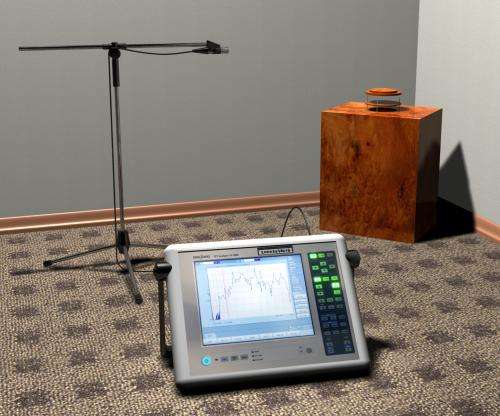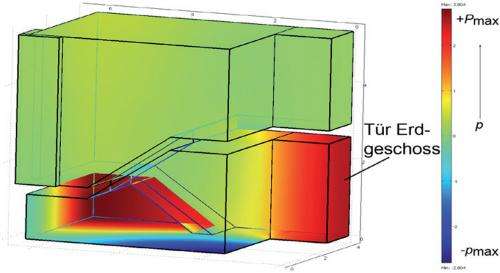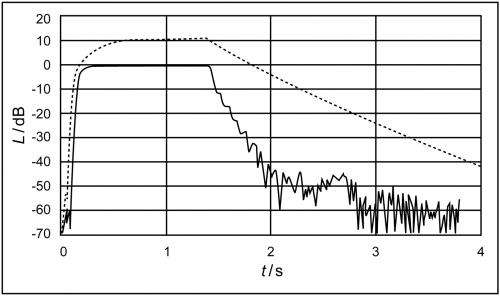An optimized Helmholtz resonator could also be a nice piece of furniture. Credit: PTB
Joy or rage? Both feelings are not far apart when dealing with the sound of deep notes in our homes. Those of us who do not own a large concert hall but have a normal living room instead, can quickly be driven to despair when the new bass speakers which sounded so good in the shop just now are set up at home: they are sometimes too loud, sometimes too quiet, sometimes they drone unpleasantly – nowhere in the room seems to be perfect.
The problem is that in rooms with rather small dimensions, deep notes (with long wavelengths) cause so-called room modes to be excited: these are standing waves with unpleasant side effects. So far there has practically been no solution to this at all. But now room acousticians from the Physikalisch-Technische Bundesanstalt (PTB) have systematically dedicated themselves to the problem and have developed a method – patent pending – which can help. To do this, a Helmholtz resonator has to be specially optimized for each case. We are now looking for a company which offers just that – for recording studios, music academies, theatres or even private music enthusiasts.
-
Sound pressure distribution computed at the resonance frequency of 38.5 Hz in a staircase. Due to the sound of a closing door, this resonance is particularly strong because the door is located exactly at the sound pressure maximum (red: positive/blue: negative instantaneous sound pressure value). Low acoustic attenuation at low frequencies results in a long echoing sound. Credit: PTB
-
Level slope without (continuous line) and with (dashed line) the optimized resonator. Credit: PTB
Provided by Physikalisch-Technische Bundesanstalt
























